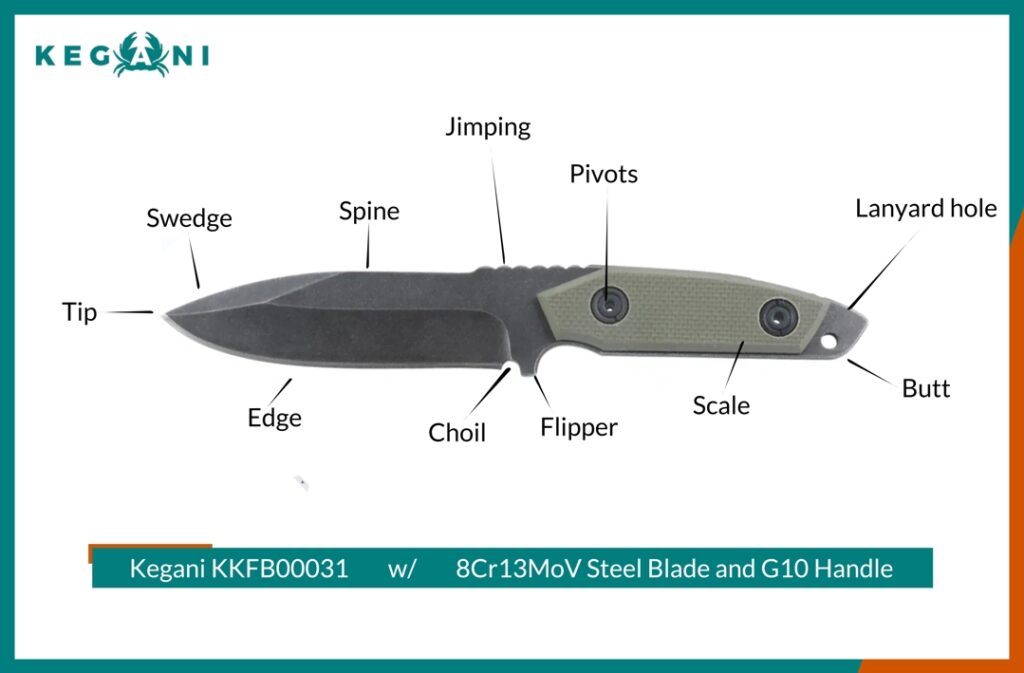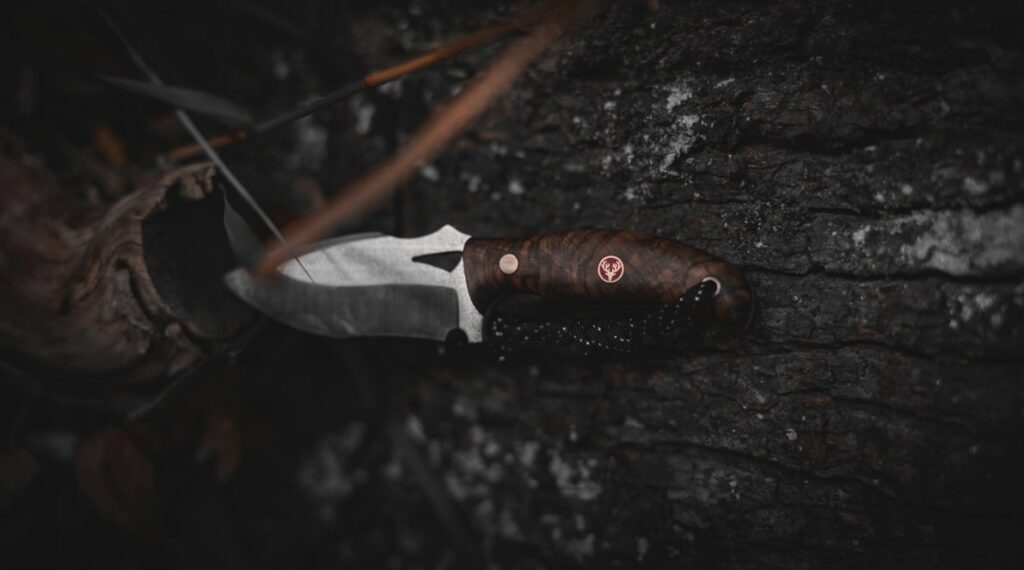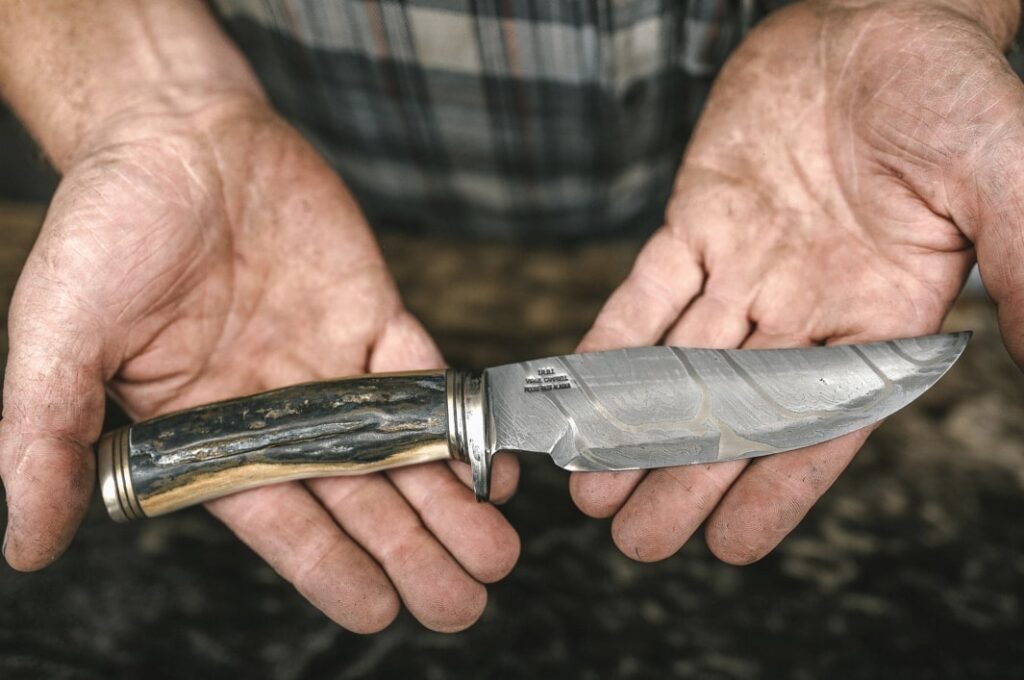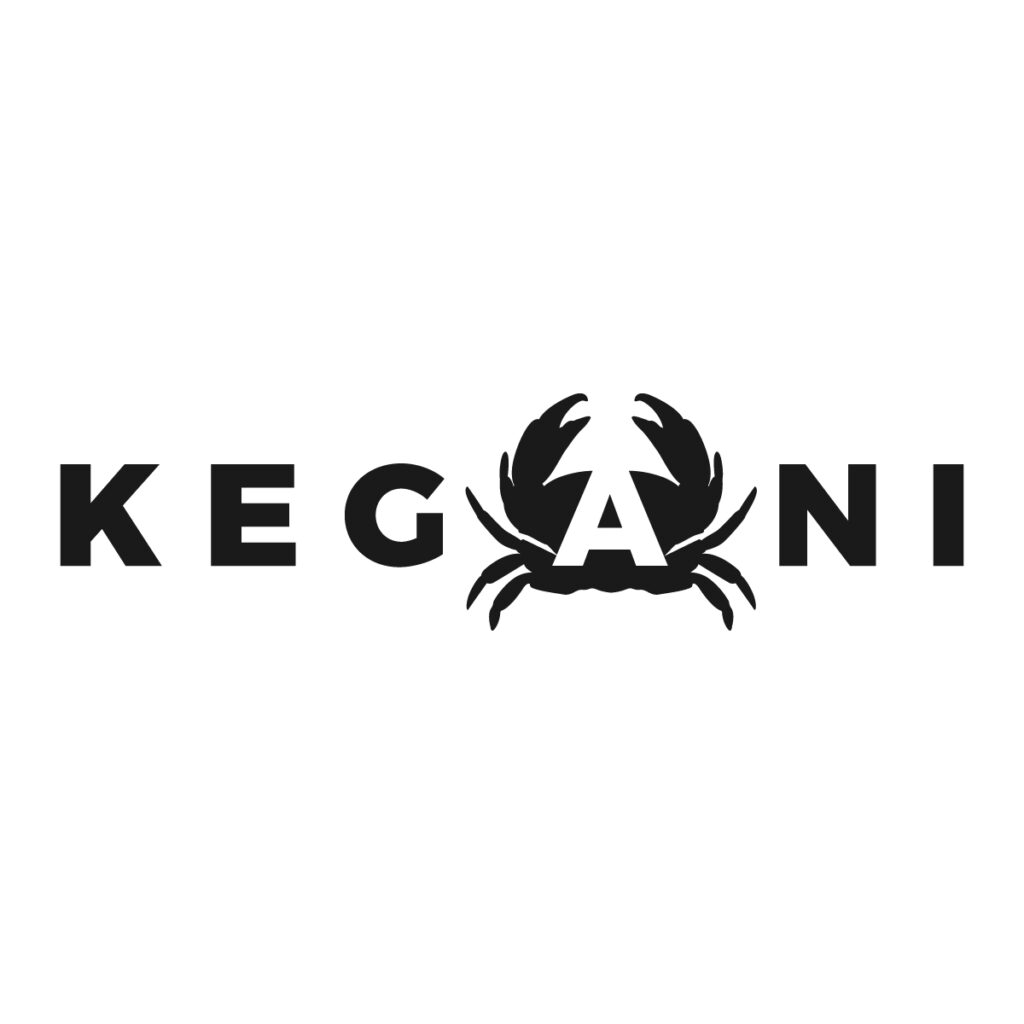Understanding the components of a hunting knife is crucial for your outdoor adventures. Each part of the knife plays a specific role, from handling the blade to making precise cuts. The anatomy of a hunting knife consists of several key areas: the blade, the handle, the point, the edge, and often a guard for safety.
The blade is the essential cutting part of the knife and comes in various shapes and sizes to suit different hunting tasks. Your hunting knife’s handle is your point of physical contact and control; it must offer a comfortable grip and often includes materials such as wood, rubber, or synthetic composites for durability and grip in various weather conditions.
There’s more to a simple hunting knife than just its two main parts, of course. Understanding the merits of the various smaller components will help in selecting a hunting knife that meets your needs while ensuring safety and efficiency during use. Keep reading and let’s find out.
Parts of a hunting knife
A hunting knife typically consists of several key components:

- Tip: The pointy end of the blade used for detailed work and precision cuts.
- Swedge: A swedge on a hunting knife refers to a secondary bevel or unsharpened edge on the spine of the blade, often used for weight reduction and increased piercing capability.
- Edge: The sharpened side of the blade which does the cutting. The edge may be straight or serrated.
- Spine: The thickest section of the blade, opposite the edge, which adds stability and strength.
- Choil: The choil on a hunting knife refers to the unsharpened notch or recess near the blade’s base, allowing for a comfortable grip and precise control during intricate cutting tasks. It also makes sharpening the blade much easier.
- Jimping: Jimping refers to small notches or ridges on the spine of the blade, providing enhanced grip and control for precise cutting and slicing tasks, especially in challenging conditions.
- Butt: The end of the handle, which can also be used as a hammer in some situations.
- Flipper: A protrusion near the blade’s base, designed to facilitate one-handed opening by applying pressure with the thumb, enhancing convenience and accessibility in outdoor settings.
- Scale: The outer casing or covering, usually made of materials like wood, G-10, or micarta, providing both aesthetic appeal and ergonomic grip for comfortable and secure handling during use.
- Pivots: Metal pins (if present) used to secure the handle to the tang.
- Lanyard hole: A hole at the end of the handle for attaching a lanyard for security.
Start Working with a Professional Now
Design features of a hunting knife
A hunting knife is a tool designed primarily for use during hunting, for tasks such as preparing game to be cooked and eaten (dressing), skinning the game, and cutting through the bone. Hunting knives come in various shapes and sizes, but they typically have a few common characteristics:
- Fixed blade: Most hunting knives feature a fixed blade, providing durability and safety. Unlike folding knives, which have a hinge mechanism, fixed blades offer greater strength and reliability for heavy-duty tasks such as field dressing and skinning game. Their solid construction ensures that the blade remains securely in place during use, reducing the risk of accidents or malfunctions.
- Wooden handle: Wooden handles are prevalent in hunting knives for both aesthetic and practical reasons. While modern materials like G10 and titanium offer excellent grip and durability, many hunters prefer the natural feel and appearance of wood. Additionally, wood is less likely to retain odors from game meat, making it easier to clean and maintain. From a marketing perspective, wooden handles evoke a sense of tradition and craftsmanship, appealing to hunters who appreciate the heritage of their gear.
- Tough steel: Hunting knives commonly utilize tough, corrosion-resistant steel alloys rather than high-carbon steel like 1095. While high-carbon steel offers excellent edge retention, it tends to be brittle and prone to rust, making it less suitable for hunting knives exposed to harsh environmental conditions. Instead, stainless steel alloys such as 440C, VG-10, or S30V are favored for their balance of hardness, toughness, and corrosion resistance. These steels can withstand the rigors of field dressing, skinning, and processing game while remaining relatively low-maintenance. Their ability to maintain a sharp edge and resist rust ensures that hunting knives perform reliably in various outdoor environments.
- Longer than normal pocket knives: Hunting knives are designed with longer blades to facilitate tasks such as skinning, quartering, and butchering game animals. The increased length provides greater leverage and cutting surface, allowing hunters to make precise cuts with minimal effort. Additionally, a longer blade can penetrate thicker hides and muscle tissue more effectively, making it easier to process larger game species such as deer, elk, and wild boar. While pocket knives are versatile tools for everyday carry, they are typically too small and lightweight for the demands of hunting and field dressing.
Folding vs fixed blade hunting knives

Fixed blade knives are the default choice for most hunting enthusiasts, and for good reason. Unlike folding knives, fixed blade hunting knives provide unparalleled stability and durability. With no moving parts, they offer superior strength and reliability, reducing the risk of mechanical failure during demanding tasks such as field dressing and skinning game. Moreover, their simple design makes them easier to clean, eliminating small crevices where dirt and debris can accumulate, ensuring a more hygienic option for handling game in the field.
While folding knives boast portability and convenience, along with added versatility, for many hunters, the priority lies in the rugged dependability and robust performance offered by a trusted fixed blade companion.
With proper handling, both fixed and folding knives can be safe. However, fixed blades typically have less risk of accidental closure on your fingers because they don’t have a folding mechanism.
Investing in hunting knives as a seller, is it worth it
Investing in hunting knives can potentially be profitable if you understand market trends, profit margins, and manufacturing intricacies.
Market trends
The hunting knife market is dynamic, often influenced by seasonal hunting cycles and regulatory shifts. Typically, demand surges at the onset of hunting seasons when enthusiasts gear up for their outdoor pursuits. However, alongside traditional hunting knives, there’s a notable rise in the popularity of tactical and multi-use knives. These versatile options appeal to consumers seeking tools adaptable to various outdoor tasks beyond hunting alone.
Within the hunting knife market, gut hook knives feature a specialized blade shape designed for field dressing game, simplifying the skinning process. They are very popular among customers. Amd hunting knives with multiple tools in one, may also be a great variation.
Manufacturing
Understanding the manufacturing process is vital to ensure product quality. Knives can be hand-forged or stamped. Materials range from stainless steel to high-carbon alloys, with the latter usually being higher-end. Your initial investment could be substantial if opting for locally manufactured, quality knives over imported, lower-cost alternatives.
Start Working with a Professional Now
What to look for when selecting hunting knives to sell?

When deciding which hunting knives to stock for sale, you should consider several key factors to meet the demands of your customers effectively. Here is a breakdown of the important characteristics to evaluate:
Blade material: Look for high-quality steels known for durability and edge retention. One excellent choice is 14C28N, known for its exceptional hardness and ease of sharpening, making it well-suited for field dressing and skinning game. Another top contender is CPM-S30V steel, celebrated for its superior wear resistance and toughness, ideal for withstanding the rigors of outdoor use. Additionally, D2 tool steel offers excellent edge retention and toughness, making it a reliable option for hunters tackling demanding cutting tasks in varied environments. Each of these steels offers unique advantages, catering to different preferences and requirements among hunters seeking reliable performance from their knives.
Blade shape: The shape of the blade defines its purpose. A drop point blade is versatile, while a clip point offers precision for detail work. Gut hook blades facilitate field dressing.
Size and weight: Ensure the knives you choose are balanced for ease of handling. A blade length of 3 to 5 inches is generally versatile for various tasks.
Sheath: A good sheath protects the knife and the user. It should be well-constructed, typically from leather or synthetic materials, and fitted to hold the knife securely.
Hunting for the perfect hunting knives
Hunting knives are a great investment, and once you have a clear picture in mind, the rest is to find a reputable supplier. At Kegani, we pride ourselves on being a professional OEM and wholesale knife factory located in YangJiang, China. With a strong commitment to craftsmanship and customer satisfaction, we have collaborated with several passionate clients to manufacture high-quality hunting knives. If you’re seeking to partner with industry leaders, we invite you to consider Kegani for your next project. Reach out to us today to request a quote using this form provided.

